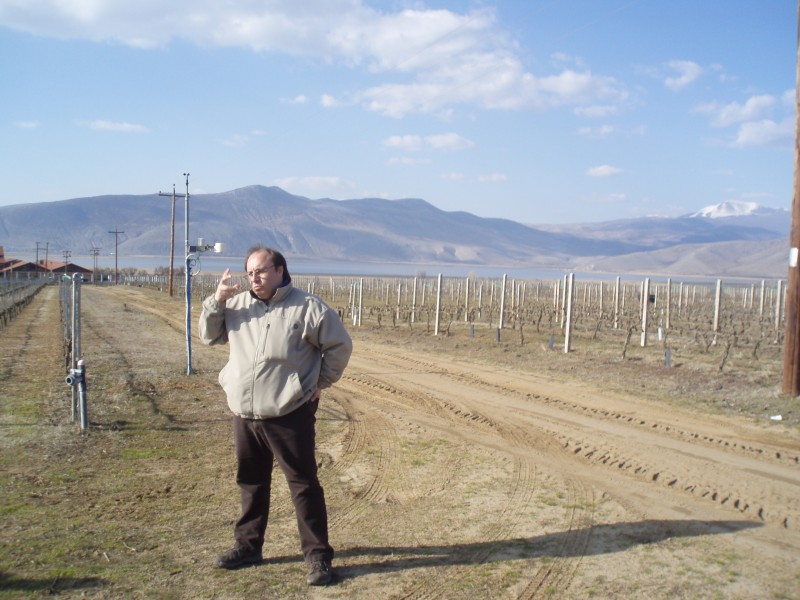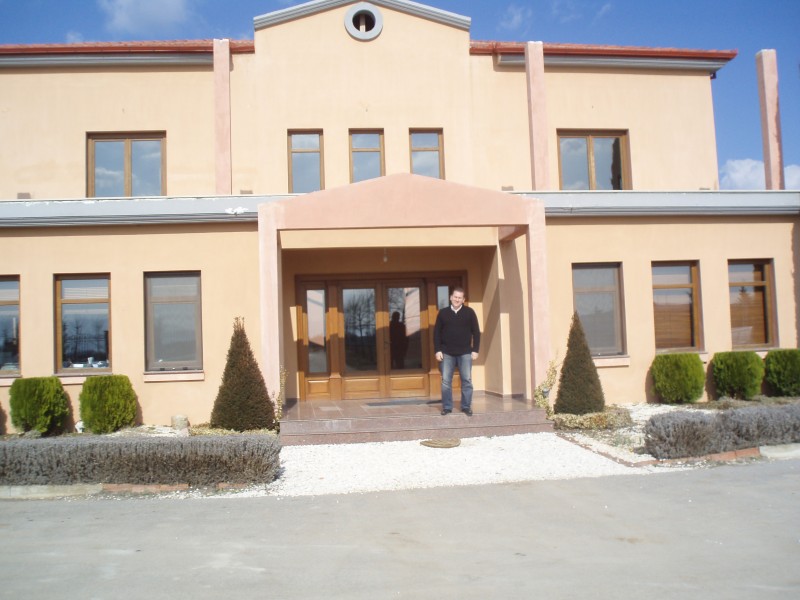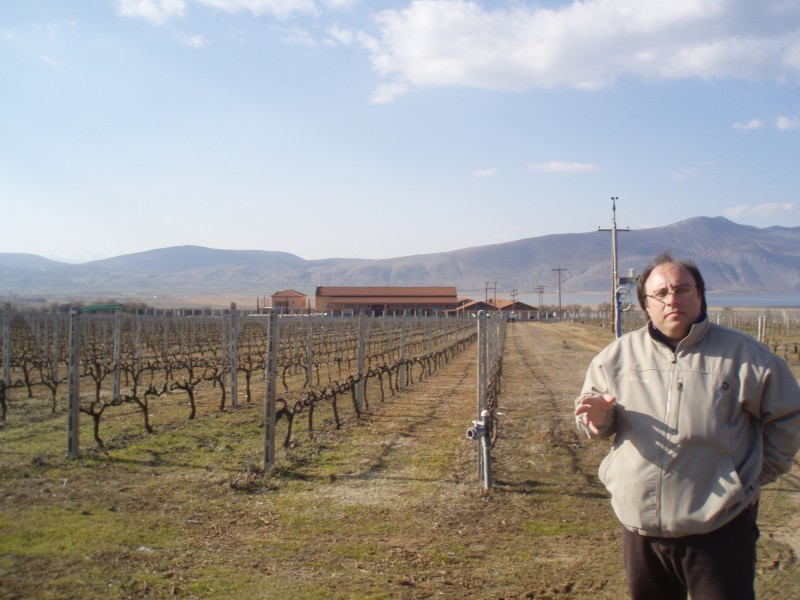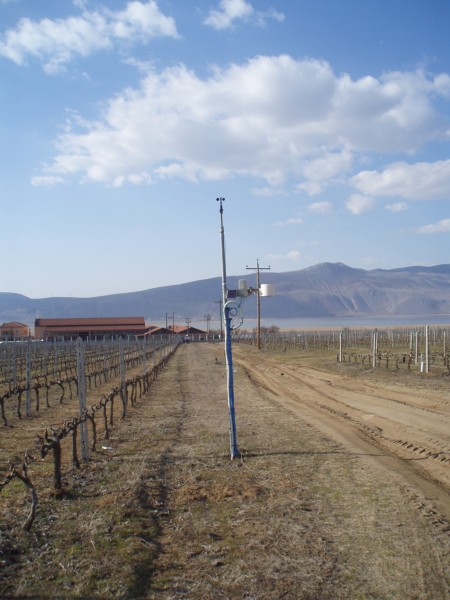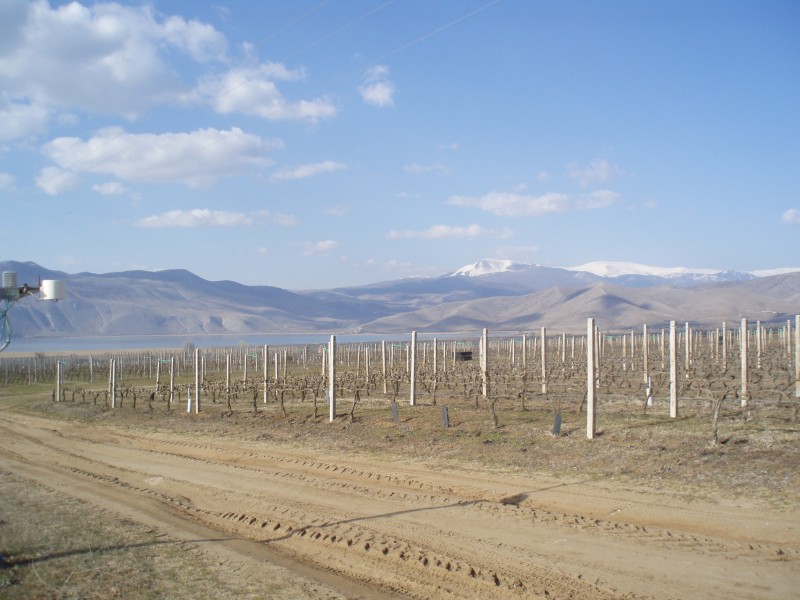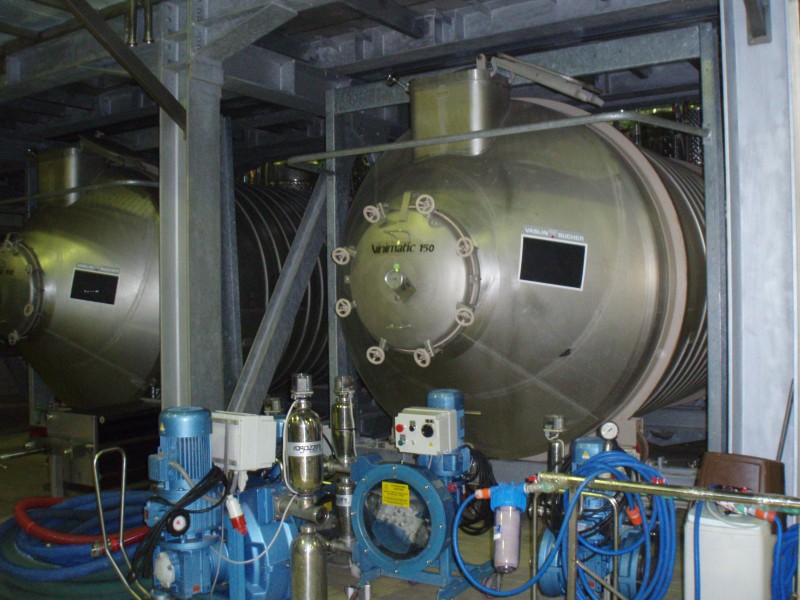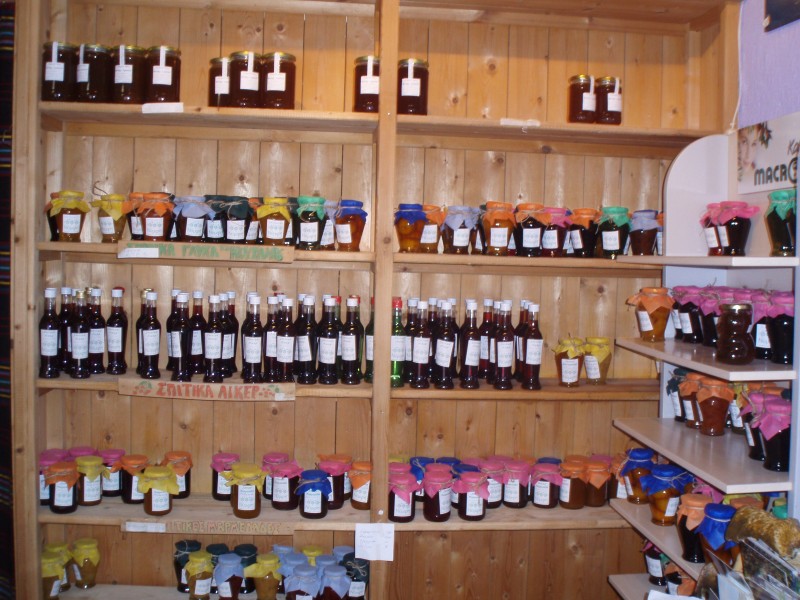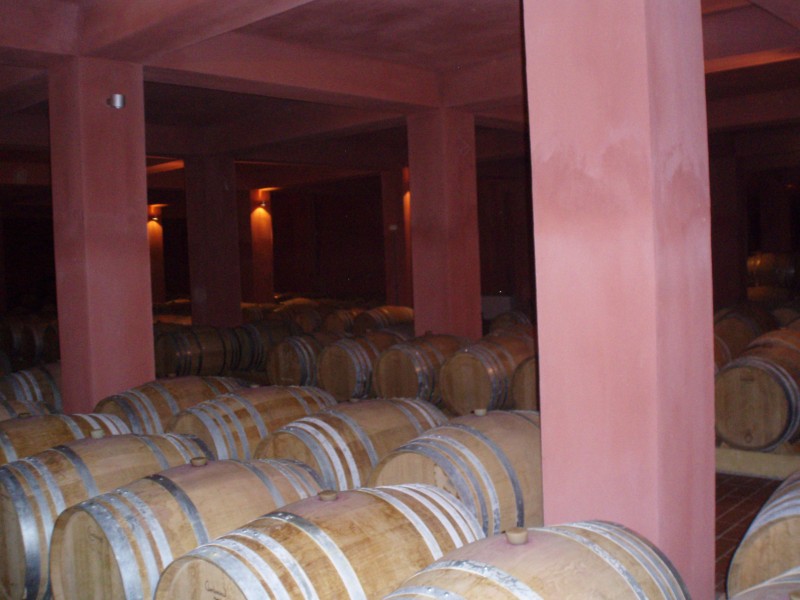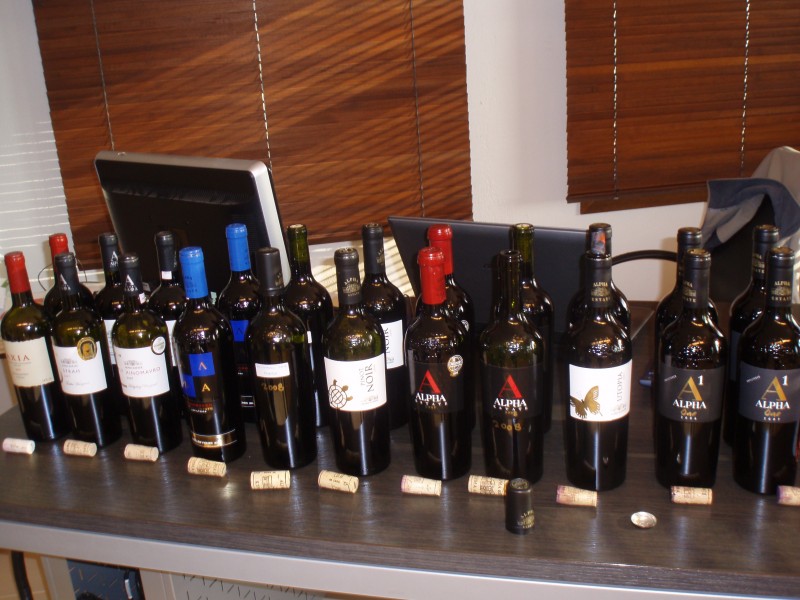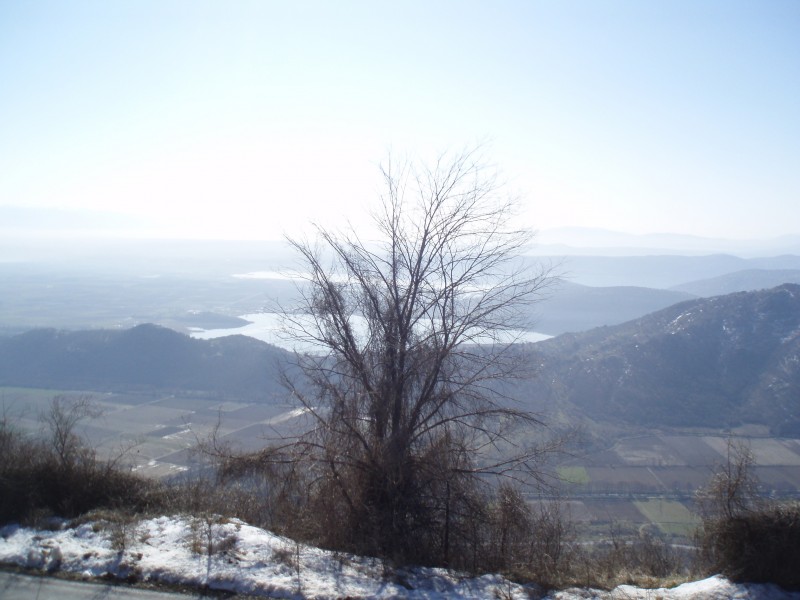After three days tasting at the very well organised 11th Thessaloniki International Wine Competition I was keen to get outside the hotel, albeit the very comfortable and smart Hyatt Regency, to see some landscapes, some vineyards and even some wineries. I had been invited to visit the Alpha Estate winery in Northern Greece.
Alpha Estate is in Florio, in Macedonia to be more precise, up near the border with Albania, Macedonia (FYROM) and Bulgaria and it is a mountainous, high-altitude area so we were told to expect snow. In fact the previous Monday it had been minus 3o C! Snow was not something I had planned for when I imagined my trip to Greece in early spring.
As we drove away from Thessalonika, west, towards the snow-covered mountains I couldn’t help thinking how un-typical this image of Greece was. It was so different from the scorching, sun drenched beaches of the Greek islands.
Yet Greece can be cooler than you think. Not only is Alpha Estate, in the wine region of Amyndeon, the coolest vine-growing region in Greece, but the wines are pretty exciting too as they produce the best Xynomavro I tasted during my stay there. As a region, Amyndeon is well known for its dry reds and rosé as well as sparkling wine made from this native Greek black variety. In fact it is one mountain range further north-west from its more famous neighbour, the Naoussa wine appellation, whose wines are also made from this tannic black grape variety. Yet Amyndeon is the region attracting the attention with some of the best winemakers on a quest for cool climatic conditions.
This is partly because of Amyndeon’s situation on a high plateau where vineyards then rise from 1,870 feet to nearly 2,500 feet. This means that even in summer, when the temperature may get as high as 32º C during the hottest days, the night-time temperature will drop to 15º, allowing phenolic ripening to take place and allowing for greater finesse in the wines. In winter the temperature can get as low as minus 3o C but the average is 3-5° above zero.
Alpha Estate’s own vineyard mesoclimate is modified by the proximity of two nearby lakes and three mountain ranges (Mts Voras, Vitzi and Vermion) which surround it (pictured above). Mount Vermion to the east cuts off any influence from the Aegean, leaving the Mediterranean climate on the other side while creating a continental one here.
As for attracting some of the best winemakers, I was driven to the winery by one of its two owners, Angelos Iatridis. Angelos has an impressive CV; having studied chemistry then oenology in Greece, he went on to study oenology in Bordeaux and then make wines in Pauillac, Alsace, Champagne, and the Rhône Valley, while also making a pit stop in Madiran, at Château Montus. It was here that he developed a long standing passion for Tannat which he also grows at Alpha. He then came back to Greece and ran a consulting winemaking company advising and making wine for many well-known Greek wineries all over Greece. This gave him the opportunity to experience many different environments across Greece for some years before choosing to set up his own winery here at Alpha with business partner and viticulturist Makis Mavridis in 1997.
Having tasted quite a few flights of wines made from Xynomavro in the Thessaloniki International Wine Challenge I understood it was a tricky grape to handle. While some wines had been very good, many had overly drying, hard-edged tannins, while others covered any potential faults with some residual sugar and were highly alcoholic, with overripe fruit and heady, Amarone-like qualities.
However, I felt it was a very characterful grape variety with great potential, so who better to ask than Angelos what Xynomavro needs to get the best out of it. He replied that it needed very careful handling to avoid extracting hard tannins from the pips and seeds.
At Alpha they use rotary fermenters with a special grid to help remove the pips and to avoid the harsher tannins. He also felt terroir was important as Xynomavro is a vigorous variety, so a low vigour soil helps to reduce this.
The topsoil is sandy (the area used to be a lake) so is low in vigour while the subsoil is clay and limestone (like so many other famous vineyards in the world) so this helps slow down the natural vigour of the variety. The yield also needs to be kept low. Angelos wants to make sure that the late-ripening Xynomavro ripens that little bit earlier and so he keeps to 5 tons per ha and practices green harvesting. This means he can harvest by the end of September or early October as opposed to the end of October.
Whatever he is doing he must be doing something right because the Xynomavro I tasted at Alpha had a most seductive, quite fleshy texture and the variety’s famous tannins were powerful without being coarse or rustic. Tasting these wines, I had one of those little moments of epiphany and illumination and I suddenly understood what this variety was capable of achieving – but more of the wines later.
Aside from the excellent quality of some of the wines we had a perfectly judged and executed visit. After our long drive we were given a light lunch in the winery then taken to the vineyard.
Standing in the wind-blown, quite austere surroundings of the vineyard with the snow-capped mountains on three sides and the isolated lake at the end of the vineyard, you could feel how the vines had to struggle against the elements to survive unaided by the uncompromisingly thin-looking sandy soil.
The nature of the terroir is extreme and challenging. In order to give the vines a chance of survival, irrigation is essential and Alpha use an underground drip irrigation system to control the supply accurately, avoiding evaporation and wastage in the summer. I don’t remember coming across an underground system like this before.
Normally most high quality wineries are very similar. Our tour around the winery was kept suitably brief but very informative, with Angelos focusing on points of difference with the sort of alacrity of an experienced winemaker who has visited and overseen many wineries himself.
The rotary fermenters, mentioned earlier, were a bit different. I have seen these used at St Francis winery in Sonoma with Zinfandel but they are not that common.
The paint used on the winery walls is a chemical-free mineral-based paint and the wood work is treated with food oil – all to avoid the potential problems of chemicals degrading to produce TCA – the infamous cork taint.
The winery windows are treated against UVA to protect the grapes from the ill-effects of strong sunlight.
All this amounts to an impressive attention to detail which I have rarely seen to the same level. In their wine lab they also have a special piece of equipment invented in Denmark which can analyse 20 different parameters of grapes, must or wine within two hours, instead of the 2 days it would take to send a sample off to an outside lab and get the results back. It can also identify, years down the line, if a wine is the same as when it left the winery. I envisaged it might spawn a wine detective agency or two in the future but perhaps I am letting my over-active imagination get carried away with images of complex wine intrigues – a sort of Billionaire’s Vinegar meets the Da Vinci Code. Anyway, the possibilities sound intriguing, but from a practical point of view at vintage time and in variable climatic conditions, it must be invaluable.
We then proceeded to the tasting room and the tasting which showed the same laser-like precision in organisational skills and had been immaculately set up to show 16 wines. I expressed an audible sigh of pleasure and murmured ‘Oh thank you God’ for a tasting that had been set up correctly, with great care and attention to detail.
That is to say 16 glasses for 16 wines, the name of the wine and vintage next to the glass, all the technical details you could wish for on each wine in an easy-to-read but brief notes booklet, individual spittoons and silence during the tasting. Too often there is someone talking, telling you what you should be tasting. Wow! This alone was something special but then some of the wines were real benchmarks and outstanding in their own right too. All were at least good but below are a selection of some of the best…
Wines tasted
Axia 2007, red, Regional Wine of Florina, Xynomavro 60%, Syrah 40%, 14% vol., total acidity 6.5 g/l, residual sugar, 2.8 g/l, pH 3.39. One of their simpler regional wines but nonetheless very good. Very sweet cherries & spice notes on nose; palate contrasts strongly with interesting savoury, minerally flavours and softly rounded tannins, best texture of tannins for Xynomavro so far but even better to come later in the tasting. Warm, juicy finish. 89/100
Alpha Xynomavro 2007 red, V.Q.P.R.D. Amyndeon Hedgehog ,Xynomavro 100%, 14% vol., total acidity 6.7 g/l, residual sugar 3.0 g/l, pH 3.38. On nose, very ripe notes, seductive. Lovely rich sweet cherry and dried roses. Much more angular structure – salty, savoury, minerally flavours, not as rich as on the nose, quite contrasting. Very compact, firm chalky-textured tannins. Barolo-like but more intense. No harsh or bitterness to tannins. 92/100
Alpha Xynomavro 2007 red, V.Q.P.R.D. Amyndeon Reserve Old Vines,Xynomavro 100%, 86 year old vines, 14% vol., total acidity 6.4 g/l, residual sugar 3.0 g/l, pH 3.52. Most intriguing nose of sun-dried tomatoes. Some blackfruits. On standing, sun-dried tomatoes become more intense . Muted sweetness initially and some herb-like, sage-like spice. Very smooth round initial attack, plump and round on mid palate. Very firm tannins but chalky-textured not bitter or harsh. Savoury dried tomato flavours – less perfumed. 93/100
I was curious about the sun-dried tomato aromas which I found on this wine but not the others so asked what viticultural conditions especially encourage this aroma and was told very hot vintages followed by very cool nights.
Alpha Xynomavro 2008 red, V.Q.P.R.D. Amyndeon Reserve Old Vines, Xynomavro 100%, 14% vol., total acidity 6.6 g/l, residual sugar 3.4 g/l. pH 3.42. 2008 – Bit peppery on nose, becoming rubbery then followed by light medicinal/quinine and herb-like notes. On standing, more aromatic. sweet spice, sun-dried tomatoes. Lighter weight, more acidity on palate but good begininng, middle and end, with herbal, quinine note, but balanced by sweet fruit. Chalky tannins with a long finish but smoky burnt oak flavours are bit too dominant. It is more angular but with attractive freshness and accessibility. overall impression is more accessible now.88/100
Alpha Pinot Noir 2008 red, Regional Wine of Florina,Pinot Noir 100%, 14.5% vol., total acidity 6.5 g/l, residual sugar 2.9 g/l, pH 3.39. This was my least favourite of the reds but I know it has been praised by some accomplished wine critics. Typical Pinot Noir appearance, light, mid-ruby, wider garnet rim. Nose has some light red fruits but also dried herbs, cloves, cinammon, fennel, sage. On the palate there is some sweet red fruit but more structured, minerally, salty and savoury flavours and firm grippy tannins. Robust structure, lacks the fragrance, delicacy and silkiness of the very best Pinot Noir. More like some of the Xynomavro characteristics. Perhaps a question of uncompromising terroir dominating the varietal typicity 84/100
Alpha Estate 2007 red, Regional Wine of Florina,Syrah 60%, Xynomavro 20%, Merlot 20%, 14.5% vol., total acidity 6.2 g/l, residual sugar 3.3 g/l, pH 3.53. Very dark, almost black core, narrow magenta rim, on the nose less fragrant with smoky, dark fruit, blackcurrant aromas. Very soft, round and smooth initial attack, full-bodied with lots of smoky, tarry, dark plum flavours. Powerful tannins but velverty.not harsh. Big mouth-filling wine. Only detracted a little by over-dominant burnt, smoky oak notes but these disappear with food. 95/100
Alpha Estate 2008 red, Regional Wine of Florina,Syrah 60%, Xynomavro 20%, Merlot 20%, 14.5% vol., total acidity 6.1 g/l, residual sugar 3.5 g/l, pH 3.57. Will be released 2012. Very deep, dark core though not opaque. Nose more open, fruity, sweet cherry, on standing becomes clove-like, more accessible nose. Dark, smoky, bitter chocolate flavours but a bit less extracted feel to this wine, gentler touch. I prefer the balance of this wine, the lightness of touch and freshness. Tannins still firm but fine-textured. Smoke, creamy, bitter chocolate flavours linger. 93/100
Alpha One 2006 red, Tannat, Regional Wine of Florina,Tannat 100%, 14.5% vol., total acidity 6.1 g/l, residual sugar 3.1 g/l, pH 3.46. Inky core, magenta rim, very powerful nose, not fruity. Marmite, black smoke, medicinal nose powerful but unforthcoming at present. On the palate, smooth, weighty, voluptuous initial attack with savoury, Marmite, beefy, iodine, black olive flavours, a bit Northern Rhône-like. The most seductive, melting texture with great velvety-textured tannins, powerful blockbuster wine, long and smoky finish. The star of the show for me but a close run to some of the Xynomavro blends. Fantastic wine. 94/100
Ωmega 2008, white, Regional Wine of Florina,Gewürztraminer 85%, Malagouzia 15%, 11.5% vol.,total acidity 6.2 g/l, residual sugar 181.6.1 g/l, pH 3.29. Pale lemon, green-toned. Aromatic rose petal nose, softly honeyed and fragrant, honeysuckle, very nice balance between sweetness and acidity and bitter flavours. Very bright, clean and pure. Great purity. 90/100.
© 2011 – 2012, Susan Hulme MW. All rights reserved.

